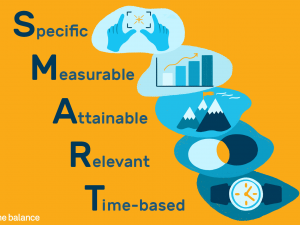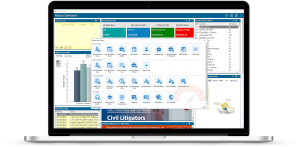5 Tips for Improving and Actually Using Your Law Firm’s Data

In the modern, technology-driven business world, there is no shortage of data available for businesses to measure performance, inform decision-making, and guide processes. Law firms, of course, are no different. You have an enormous amount of information on hand, in the form of court records, legal files, time entries, invoice documents, payment times and more. And, thanks to advances in legal technology, there are now practice-specific solutions equipped with law firm reporting software that can help you digest, visualize, and make your data more actionable.
Leveraging data analytics in the legal industry
As most attorneys know, the industry hasn’t always been quick to adopt new technologies — and legal analytics tools and business intelligence systems, commonly packaged inside a practice management software, are no exception. But it doesn’t take much for your firm to quickly become a sophisticated, data-powered organization. All you need is a change in mindset and a willingness to embrace innovation.
Once you see how valuable practice management tools are for turning your data into actionable insights that can help discover inefficiencies, improve workflows, streamline operations and boost your bottom line, you’ll wonder why you didn’t start using them earlier.
Top 5 law firm data analytics tips
Getting the most out of your data is easier than you think. It starts with answering five basic questions: Why? How? What? Who? Where?
1. Why? Setting the framework
To effectively use your law firm’s data, you must determine why you are analyzing data in the first place. What do you want to understand about your firm? Is it what happened in the past and why, how to change future performance or – more likely – both?
“Why” is typically a question for the managing partner to answer because it involves the firm’s strategic plans. For example, your plan may call for an approach that shifts away from the all-important billable hour. Management may want to know how to use data analytics to develop a range of potential alternative fee options for clients.
Aligning how you visualize your law firm’s data analytics with your strategic plans also will help drive firmwide adoption of analytical systems and processes. As you know, it’s always easier to implement new initiatives with an understanding of ‘why’.
2. How? Develop SMART, strategic goals aligned with firm objectives
 So, you’ve decided to use data to help drive planning, but how will you do so? Defining your success criteria is crucial. Setting specific goals allows you to measure effectiveness and track success. Essentially, your goals are the procedural steps – the how – for accomplishing the why.
So, you’ve decided to use data to help drive planning, but how will you do so? Defining your success criteria is crucial. Setting specific goals allows you to measure effectiveness and track success. Essentially, your goals are the procedural steps – the how – for accomplishing the why.
The best goals are SMART. That is, they are Specific, Measurable, Achievable, Realistic, and Timely. Too often, good initiatives fail due to amorphous, unrealistic, or unachievable goals.
Defining SMART goals for data analytics requires understanding the key drivers of your law firm. Is success going to turn on increased revenue? Increased matter profitability? Improved client turnover? Increased profit-per-partner? Legal victories and favorable judgments? Employee retention or client satisfaction? How your firm measures success will define how you present and make use of data.
3. What? Identify your Key Performance Indicators (KPIs)
Once you understand why you’re analyzing data and how you intend to use it, selecting the data you want available for review is simple. These are the key performance indicators (KPIs) that you measure on a real-time basis.
Proper selection of KPIs is vital. For most attorneys, profit and profitability are the most critical KPIs. But these often are overly focused on the short term, and there may be many others that better indicate whether you are meeting your SMART goals.
Just as important is the question of whether you have the right data to calculate your KPIs. The best analytics systems in the world are only as good as their data. Implementing effective data analytics within a law firm requires developing a culture committed to quality creation and actual utilization of data. A little extra front-end effort will generate tremendous benefits.
One prime example of low-quality data in law firms is task coding for time entries. Timekeepers often bulk code entries rather than appropriately assigning individual tasks. But this creates low-quality data that will hinder your efforts to develop matter budgets or assess potential alternative fee arrangements for future matters.
This is where your buy-in for data analytics is crucial. With management leading by example, it is more difficult for others to ignore use of best practices or disregard data insights.
Return on investment (ROI) is a popular KPI to track. But how can you measure the ROI of technology innovation? Download our free whitepaper The ROI of the Cloud to find out.
4. Who? Build custom report dashboards
 Creating effective dashboards requires understanding who is using the data and what you want out of the reports. Each person accessing your data will have different needs and will prioritize data differently. Effective dashboards present the most critical information first – which KPIs matter most? – so you must know what each user needs to see.
Creating effective dashboards requires understanding who is using the data and what you want out of the reports. Each person accessing your data will have different needs and will prioritize data differently. Effective dashboards present the most critical information first – which KPIs matter most? – so you must know what each user needs to see.
With AbacusLaw you and your users can customize their dashboard to track the items that mean most. For example, most users grasp charts and tables better than lists of numbers. Trends are also more easily recognized when in visual graphic form.
You also need to display data that makes it clear if you are meeting goals. Trend directions are important, but they depend on the KPI; obviously, you want to see a line decreasing for non-billable hours but increasing for new clients.
Allowing users to build custom dashboards using easily selectable modules also helps maximize participation in your data analytics efforts.
5. Where? Share your data across the firm
Many practices consider performance information to be solely the province of shareholders or management. But you will get more firmwide engagement with your legal analytics tools – and, frankly, in overall firm health – by being more transparent and sharing information broadly across your organization.
The more people understand what the firm is trying to accomplish, the more they can help drive those goals. However, not all information should be freely available; effective analytics efforts tailor reporting for every level, and some sensitive internal and client data still needs to be protected.
You can also use your practice management solution’s law firm reporting software to automate report distribution at specified times to reinforce the firm’s commitment to transparency. Reporting should be available across all devices, particularly on devices that leadership and individual client managers use. Anytime, anywhere access to reporting allows firms to be more responsive to client demands and respond more rapidly to issues as they arise.
Accelerate firm success with data analytics for lawyers
Every law firm has an endless supply of valuable data at its fingertips. You can put that data to good use to drive strategic plans and build a more productive, profitable practice. With high-quality data underlying insightful analytics, customized dashboards presenting real-time performance and comprehensive reports conveying actionable intelligence, you can create a culture of innovation and constant improvement.
At AbacusNext, we offer a suite of practice management solutions to help you discover new ways to optimize the areas of your practice. Streamline your firm’s operational challenges with software and service bundles designed to enhance your capabilities across the firm, both in office and remote.
With our Productivity Bundle, you can connect the dots to help drive increased productivity, gain deeper insights into your firm’s KPIs, and achieve peace of mind.
The Cloud Secure Bundle adds private cloud protection of your firm’s critical data and applications, on top of everything else.
Contact us today to connect with our technology experts and learn how we can help you get the most out of your law firm’s data analytics.